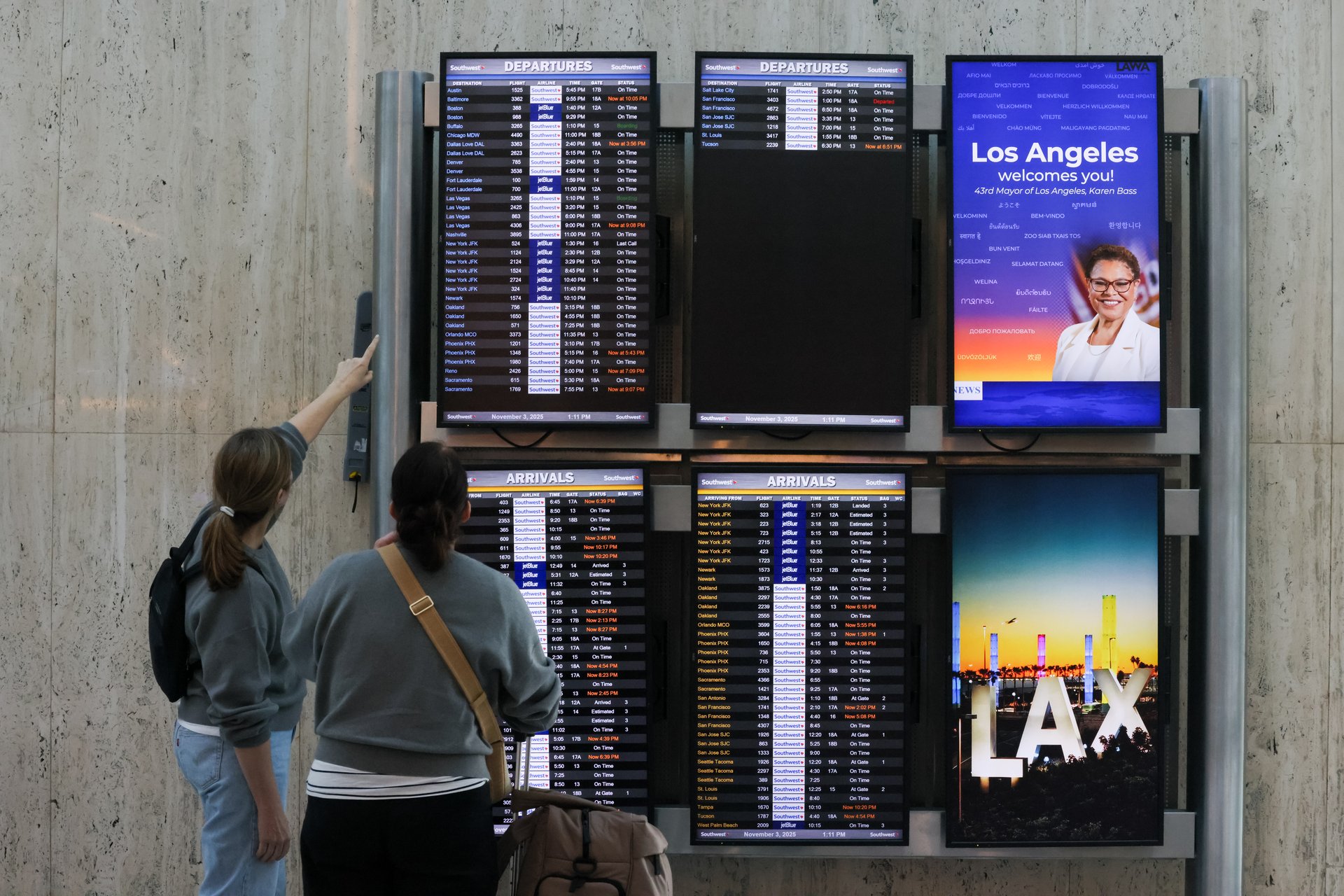The FAA is cutting flights at 40 major airports. Here's what it means for travelers
A record-long government shutdown has the agency set to throttle flight volumes by 10% at dozens of airports, with the holiday travel season coming

Juliana Yamada / Los Angeles Times via Getty Images
The government shutdown hit Day 36 on Wednesday, making for the longest shutdown in history. Among the many government employees affected are air traffic controllers — civil servants employed by the Federal Aviation Administration, which sits within the Department of Transportation. Deemed “essential workers," air traffic controllers have been working without pay, placing a growing strain on U.S. airports.
Suggested Reading
Now the FAA has announced that it will throttle flight volumes by 10% at 40 major U.S. airports beginning Friday. It’s an emergency move officials say is needed to keep skies safe. A list of affected airports will be released after airlines are briefed, the agency said.
Related Content
The FAA handles more than 44,000 flights on an average day, so a 10% cut is significant, especially heading into the busy holiday travel season. New York, Chicago, and Nashville are already feeling the pain, as staffing shortages have already triggered delays in recent weeks.
Announcing the move, Transportation Secretary Sean Duffy framed it as a pressure release valve for a system strained by missed paychecks and mounting fatigue among both controllers and TSA officers, who also have to work without pay during the shutdown.
“We thought 10% was the right number based on the pressure we were seeing,” he said.
FAA Administrator Bryan Bedford said that reductions would be phased in and could deepen if staffing levels deteriorate, adding that the goal is to avoid risking the agency’s safety record.
How much disruption should travelers expect?
The aviation data firm Cirium estimates that up to 1,800 flights could be affected on Friday alone, though the final tally depends on which hubs are targeted. Travelers are advised to check airline apps and emails, expect re-bookings, and build in extra time for security and connections. FlightAware.com, which allows for search by airport and city, offers flight-traffic data in a visual format, showing where pile-ups are occurring.
Meanwhile, expert warn that, if the shutdown persists, Friday’s 10% may be a floor, not a ceiling.
Airlines are bracing for a range of possible outcomes and difficulties. United Airlines told employees that long-haul international routes and hub-to-hub flying should be spared initially, implying that regional and short-haul connections will take the hit. American and Southwest said they will notify affected customers and attempt to minimize disruption, while the industry group Airlines for America warned that millions have already been delayed or canceled since early October, shortly after the shutdown began.
Cutbacks bring long-standing vulnerabilities to spotlight
The controller workforce has been stretched thin for years, and training pipelines aren’t designed to withstand prolonged hiring freezes or widespread no-shows. Bedford said the FAA will keep meeting with carriers to adjust schedules and, if needed, expand restrictions — potentially including limits on space launches that have become a growing source of traffic complexity.
Duffy has said in recent TV interviews that air travel will continue to be affected even after the shutdown ends.
Airline stocks fell heading into Thursday's market open.
